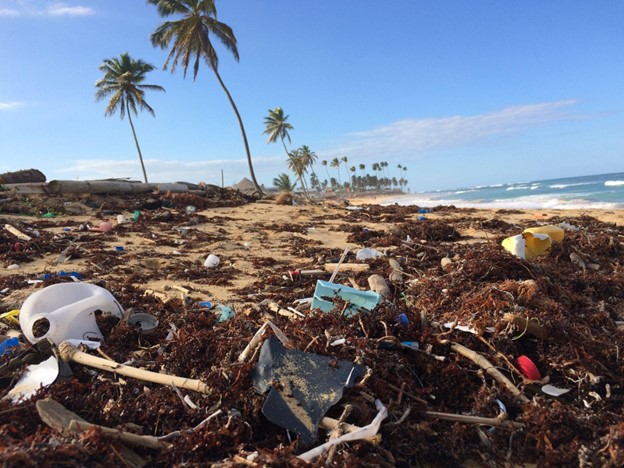
We rely on plastic heavily in modern times. It’s hard to avoid using unnecessary plastic in our everyday lives, as even basics like fruits and vegetables often come wrapped in it. Plastic waste continues to rise, which unfortunately was further amplified by the recent pandemic. The usage of PPE, albeit lifesaving, generated 370% more medical waste than usual in the city of Wuhan alone. Similar patterns were seen across the world, and in times of dramatic climate change, this really had a knock-on effect.
In this article, we examine how the increasing amount of plastic waste impacts our oceans, and how it ends up there in the first place.
How does plastic end up in our oceans?
Plastics end up in our oceans for many reasons, some of which you may not expect. Many people assume that companies dumping waste into oceans is the primary cause, but in reality, everyone is responsible.
As plastic is light, it often accumulates around drains. This can be a result of rainwater carrying litter, or even plastic getting blown off of vehicles if it’s being transported to a landfill. Drains ultimately lead to the sea, so anything that creeps through the vents will inevitably end up in our oceans.
What are the implications of plastic waste in our oceans?
Harmful to sea life
When plastics reach the ocean, they slowly break down into smaller pieces, otherwise known as microplastics. Microplastics are incredibly harmful to sea life, contaminating the water and ending up in the food chain. When sea creatures consume food that has been contaminated, the microplastics sit in their stomach, taking up space and eventually causing them to die from starvation.
Another large source of plastic waste is “ghost gear”, which consists of abandoned fishing equipment such as plastic nets. These large nets regularly collide with marine life, trapping them and leading to the material becoming tightly wrapped around them, often resulting in severe injuries or death.
Dangerous for human health
Microplastics are also incredibly dangerous for humans, having been known to cause serious health complications. Microplastics are thought to contribute to causing severe illnesses, such as cancer, reduced fertility, psychological illnesses, and birth defects. When plastic contaminates our ocean, it will inevitably end up in our food. It’s even thought that the majority of seafood now contains microplastics.
There are many kinds of plastic, all of which are composed of slightly different chemicals. However, almost all plastic is known to contain toxins, which will be released into our oceans if plastic is allowed to degrade there.
It’s a collective effort
It is incredibly important that everyone does their part to reduce the amount of plastic waste they produce. If you must use plastic, make sure that it is properly recycled and not just thrown away. It can be hard to know if you’re making an impact, but rest assured that every single piece that doesn’t end up in our oceans is a success. The collective effort will put us on the right track to looking after our planet and the wonderful creatures that inhabit it.
By Ross Hansen

